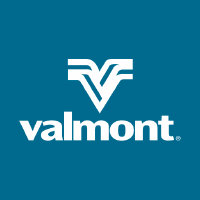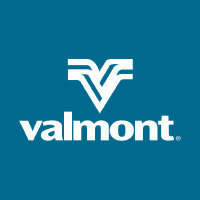
Valmont Industries Inc
NYSE:VMI


| US |

|
Johnson & Johnson
NYSE:JNJ
|
Pharmaceuticals
|
| US |

|
Berkshire Hathaway Inc
NYSE:BRK.A
|
Financial Services
|
| US |

|
Bank of America Corp
NYSE:BAC
|
Banking
|
| US |

|
Mastercard Inc
NYSE:MA
|
Technology
|
| US |

|
UnitedHealth Group Inc
NYSE:UNH
|
Health Care
|
| US |

|
Exxon Mobil Corp
NYSE:XOM
|
Energy
|
| US |

|
Pfizer Inc
NYSE:PFE
|
Pharmaceuticals
|
| US |

|
Palantir Technologies Inc
NYSE:PLTR
|
Technology
|
| US |

|
Nike Inc
NYSE:NKE
|
Textiles, Apparel & Luxury Goods
|
| US |

|
Visa Inc
NYSE:V
|
Technology
|
| CN |

|
Alibaba Group Holding Ltd
NYSE:BABA
|
Retail
|
| US |

|
3M Co
NYSE:MMM
|
Industrial Conglomerates
|
| US |

|
JPMorgan Chase & Co
NYSE:JPM
|
Banking
|
| US |

|
Coca-Cola Co
NYSE:KO
|
Beverages
|
| US |

|
Walmart Inc
NYSE:WMT
|
Retail
|
| US |

|
Verizon Communications Inc
NYSE:VZ
|
Telecommunication
|
Utilize notes to systematically review your investment decisions. By reflecting on past outcomes, you can discern effective strategies and identify those that underperformed. This continuous feedback loop enables you to adapt and refine your approach, optimizing for future success.
Each note serves as a learning point, offering insights into your decision-making processes. Over time, you'll accumulate a personalized database of knowledge, enhancing your ability to make informed decisions quickly and effectively.
With a comprehensive record of your investment history at your fingertips, you can compare current opportunities against past experiences. This not only bolsters your confidence but also ensures that each decision is grounded in a well-documented rationale.
Do you really want to delete this note?
This action cannot be undone.

| 52 Week Range |
204.8
352.14
|
| Price Target |
|
We'll email you a reminder when the closing price reaches USD.
Choose the stock you wish to monitor with a price alert.

|
Johnson & Johnson
NYSE:JNJ
|
US |

|
Berkshire Hathaway Inc
NYSE:BRK.A
|
US |

|
Bank of America Corp
NYSE:BAC
|
US |

|
Mastercard Inc
NYSE:MA
|
US |

|
UnitedHealth Group Inc
NYSE:UNH
|
US |

|
Exxon Mobil Corp
NYSE:XOM
|
US |

|
Pfizer Inc
NYSE:PFE
|
US |

|
Palantir Technologies Inc
NYSE:PLTR
|
US |

|
Nike Inc
NYSE:NKE
|
US |

|
Visa Inc
NYSE:V
|
US |

|
Alibaba Group Holding Ltd
NYSE:BABA
|
CN |

|
3M Co
NYSE:MMM
|
US |

|
JPMorgan Chase & Co
NYSE:JPM
|
US |

|
Coca-Cola Co
NYSE:KO
|
US |

|
Walmart Inc
NYSE:WMT
|
US |

|
Verizon Communications Inc
NYSE:VZ
|
US |
This alert will be permanently deleted.
 Valmont Industries Inc
Valmont Industries Inc
Valmont Industries Inc
Investor Relations
In the heart of America's industrial landscape, Valmont Industries Inc. has carved out a distinctive identity as a global leader in the niche market of infrastructure and agricultural products. Founded in 1946, Valmont has grown from a single steel pole manufacturing facility into a multinational corporation renowned for its innovative engineering and enduring solutions. The company's operations span four key business segments: engineered support structures, coatings, utility support structures, and irrigation. With a keen focus on addressing the world's pressing demands for infrastructure and food production, Valmont designs, manufactures, and sells a diverse range of products such as lighting and traffic structures, coatings that protect steel from corrosion, poles and towers that are the backbone of utility lines, and advanced agricultural irrigation systems that enhance crop productivity globally.
At the core of Valmont's earning power is its capacity to deliver high-quality, tailored solutions that meet the diverse needs of their clientele across multiple sectors. The engineered support structures and utility support structures segments cater to the ever-growing global demand for reliable infrastructure, particularly in the energy and communications industries where robust poles and towers are indispensable. Meanwhile, the irrigation segment leverages cutting-edge technology to support the agricultural sector, offering precision irrigation systems that optimize water use for farmers—critical in a world where sustainable practices are increasingly prioritized. This strategic alignment with long-term global trends, such as urbanization, digital communication expansion, and sustainable food production, secures Valmont’s revenue streams, reinforcing its position as an integral player in facilitating both modern infrastructure and agricultural efficiency worldwide.

In the heart of America's industrial landscape, Valmont Industries Inc. has carved out a distinctive identity as a global leader in the niche market of infrastructure and agricultural products. Founded in 1946, Valmont has grown from a single steel pole manufacturing facility into a multinational corporation renowned for its innovative engineering and enduring solutions. The company's operations span four key business segments: engineered support structures, coatings, utility support structures, and irrigation. With a keen focus on addressing the world's pressing demands for infrastructure and food production, Valmont designs, manufactures, and sells a diverse range of products such as lighting and traffic structures, coatings that protect steel from corrosion, poles and towers that are the backbone of utility lines, and advanced agricultural irrigation systems that enhance crop productivity globally.
At the core of Valmont's earning power is its capacity to deliver high-quality, tailored solutions that meet the diverse needs of their clientele across multiple sectors. The engineered support structures and utility support structures segments cater to the ever-growing global demand for reliable infrastructure, particularly in the energy and communications industries where robust poles and towers are indispensable. Meanwhile, the irrigation segment leverages cutting-edge technology to support the agricultural sector, offering precision irrigation systems that optimize water use for farmers—critical in a world where sustainable practices are increasingly prioritized. This strategic alignment with long-term global trends, such as urbanization, digital communication expansion, and sustainable food production, secures Valmont’s revenue streams, reinforcing its position as an integral player in facilitating both modern infrastructure and agricultural efficiency worldwide.





























 You don't have any saved screeners yet
You don't have any saved screeners yet
